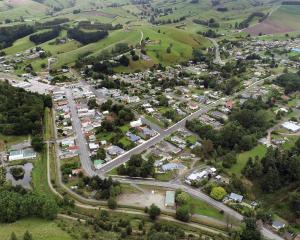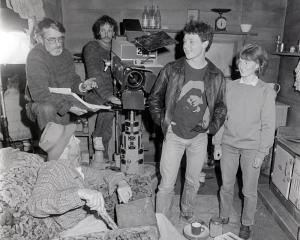
Lake Wanaka has just joined an increasingly long list of "troubled" New Zealand lakes. Perhaps the worst is Lake Tutira, a North Island lake that became anoxic (completely devoid of oxygen) last summer, resulting in a major fish kill in the once popular trout fishery. Now, notices about fishing rules are accompanied by warnings not to swim.
No-one would say Lake Wanaka is anywhere near that condition — having low nutrient concentrations typical of our deep "clean" southern lakes. All the same, an unusual alga was first noticed in Lake Wanaka in 2004 — the diatom Lindavia intermedia. This has a tendency to clump together, becoming visible to the naked eye as "lake snow".
However, since then, it has transformed into what is aptly named "lake snot" — an assemblage of the diatom, bacteria and mucus. "Lake snot" hangs in strings in the water column, so it wasn’t long before fishing lines, boats and even some swimmers in the 2016 Challenge Wanaka event found themselves fouled. Simultaneously, lake snot was causing havoc to the Lake Wanaka water supply, blocking intake filters. And residents were reporting problems with their washing machines, dishwashers and garden sprinklers.
The lake scientists working on the problem haven’t got all the answers yet but it seems likely that small increases of nutrients (nitrogen, phosphorus and micronutrients), together with warming associated with climate change (2016 set to be the hottest year on record in NZ and the globe), could be contributing causes.
So where are these nutrients coming from?
Returning from a Rob Roy Glacier walk, I had to negotiate, as usual, the inevitable trail of cattle dung and witness cattle grazing the riverbanks and freely watering/relieving themselves in the river. But more disturbing was the sight of two topdressing planes spreading loads of fertiliser over the valley floor and well up the scrubby hillsides all day.
Tenure review has resulted in an intensification of back-country farming practices that add nutrients from fertiliser and stock in a one-way process from the catchment into the lake.
Burgeoning development in the town is also delivering a whole range of undesirables into the lake — most obvious of which is sediment from multiple new subdivisions. During one of an increasing number of intense rainstorms, likely associated with climate change, a damaging slug of sediment was sent from a subdivision down spring-fed Bullock Creek into the lake. Stormwater drains carry every type of chemical from road surfaces and town facilities into the lake. And lawns and gardens where fertilisers and pesticides are applied regularly represent a mosaic of mini farm paddocks through the town.
So, how can we prevent our lovely lake from succumbing to the effects of increasing nutrients and other inputs?
Already, moves to set up a sound lake monitoring programme are under way and the sooner this can be implemented the better. Without adequate data about changes in lake water quality scientists are hampered in applying techniques that will point to effective solutions.
These solutions can best be put in place if they are integrated into a comprehensive Lake Wanaka and catchment management plan. Recently, a number of groups motivated to do something positive for the lake have been established, but as yet there is no single group focused solely on Lake Wanaka.
An integrated group needs to include representatives of the community of lake and land users, such as recreational lake and farming interests, selected by their own interest groups. The statutory managers, Otago Regional Council, Queenstown Lakes District Council, Ministry for Primary Industries, Land Information NZ, Department of Conservation and Fish and Game all have a place because they have the necessary tools to implement the strategies of the group. And Ngai Tahu, as partner to the Crown and its agencies, with a proven record of environmental stewardship, is integral to the group. Finally, scientists are critical because their advice will underpin the development of effective remedies.
The leadership of such a group ideally needs to be knowledgeable about all aspects of lakes and able to keep the group happily focused on delivering a management strategy for Lake Wanaka and its catchment. Admittedly, this is a challenging task, but by no means impossible. A textbook example of such an integrated, community-driven approach successfully resulted in the 2005 Fiordland Marine Management Act. Valuable lessons from the experience of the Fiordland Marine Guardians could well be applied to help Lake Wanaka.
We just need to get together and make it happen for our lovely Lake Wanaka.
● Wanaka resident Laurel Teirney is an aquatic scientist, facilitator and writer and a former Guardian of Lake Wanaka.










